Reading time is around minutes.
Section 1 Subsystems
Memory -
Memory performance is very important on a motherboard, especially when you have a CPU with multiple cores and threads. If you have slow memory your cores and threads can become starved for data to execute. To test memory performance we run both Sisoft’s SANDRA and AIDA64. These two combine to not only give us accurate numbers but to validate each other. For testing at stock speeds the memory is hard set to 1333MHz while overclocking testing is done at the highest stable speed for the voltage of 1.65v this is due to the different memory dividers for each CPU. As such, the memory speeds will vary greatly. This means that the overclocked numbers are a little misleading and while they can show a trend are really only included to show if a board has a problem with memory performance at high clockspeeds.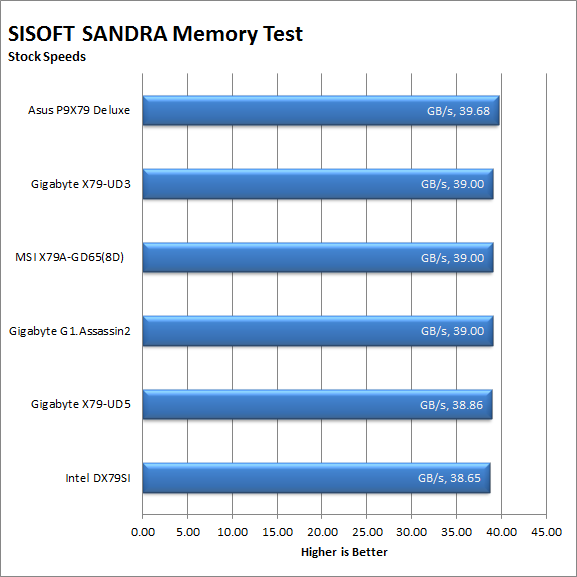
The Gigabyte X79-UD3’s memory performance was up where it should be. It was not at the top, but it was close in both stock testing and overclocked. Unless there is something seriously wrong with another component we should see good performance in most of our tests.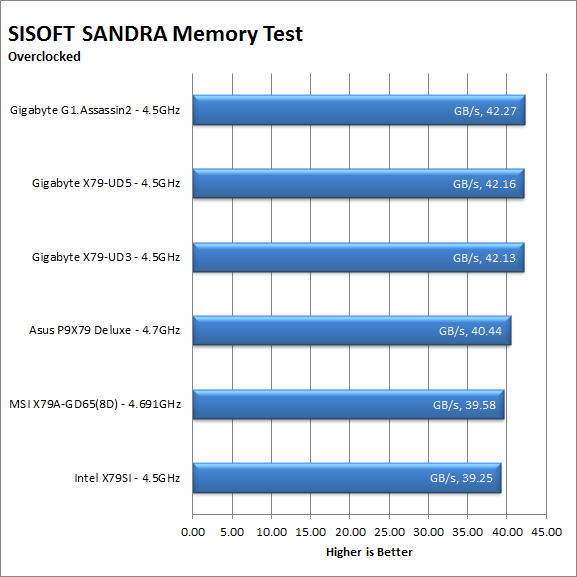
AIDA64 shows how the actual performance breaks out with good read, write and copy speeds. The latency here was slower than we would like, but that can be adjusted in the BIOS to get more performance out of your system.
| AIDA64 Memory Performance Stock | AIDA64 Memory Performance Overclocked |
 |
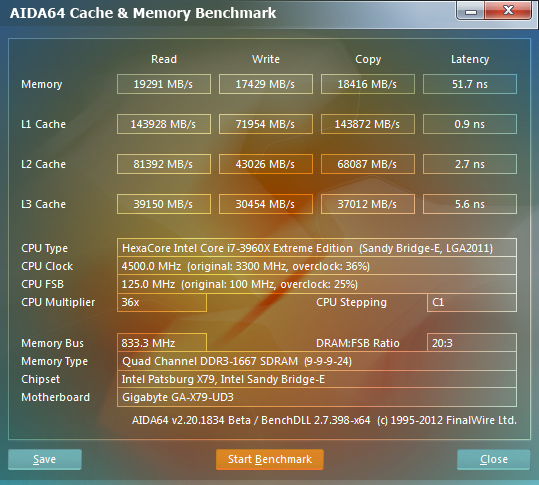 |
Drive performance -
Drive performance is also one of the major subsystems that goes to make up the performance of a motherboard. For our testing we use Sandra and AIDA64 again. We only test with single drives for each type of controller present on the motherboard (unless it is a professional product where we will use RIAD 5 and/or 10). We have also begun using a Seagate PS-110 USB 3 external HDD and a Kingston HyperX USB 3.0 Flash drive for our USB 3.0 performance. As a side note, we include the overclocked numbers here to make sure (again) that you are not going to see a major drop in performance due to minor instabilities at high clock speeds.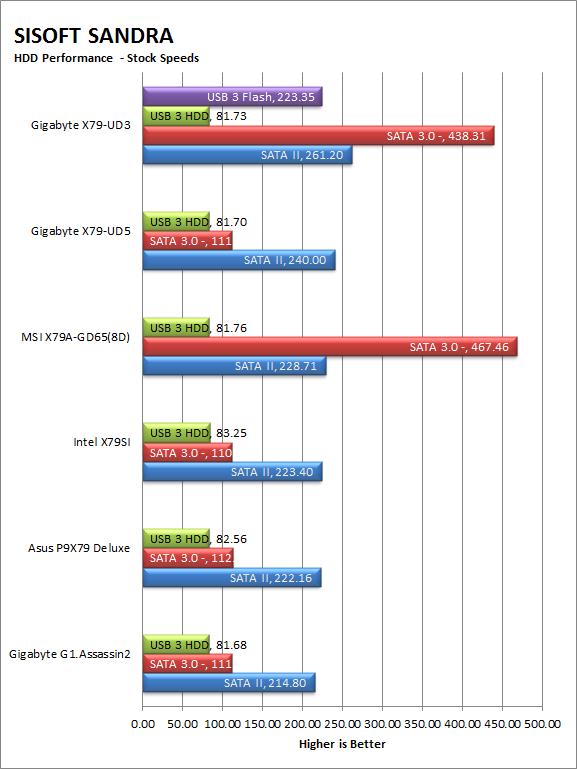
The Gigabyte X79-UD3 was at the top of the pack for our drive tests. With the new Kingston HyperX SSDs in the system we are really seeing what these boards can do. Oddly the SATA 3.0 performance was not as fast as the MSI X79A-GD65(8D), with about a 30MB/s gap between the two boards here. The USB3.0 flash performance is great, but as we do not have anything to compare it to yet we will have to reserve judgment on the board. Still good drive speed can help with everything from general computing to gaming (level load and refresh times). 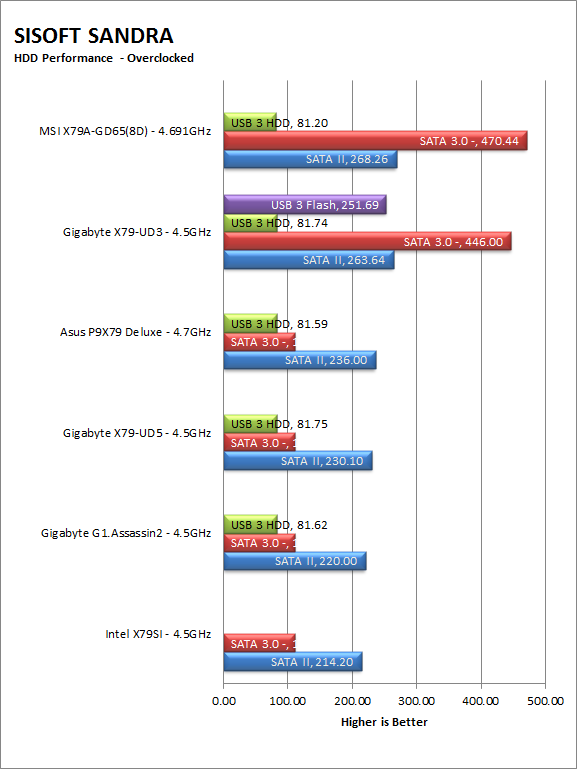
AIDA64 fills in the missing information again with details about how each drive performs with different read functions and data sizes.
| AIDA64 HDD Performance Stock | AIDA HDD Performance Overclocked |
 |
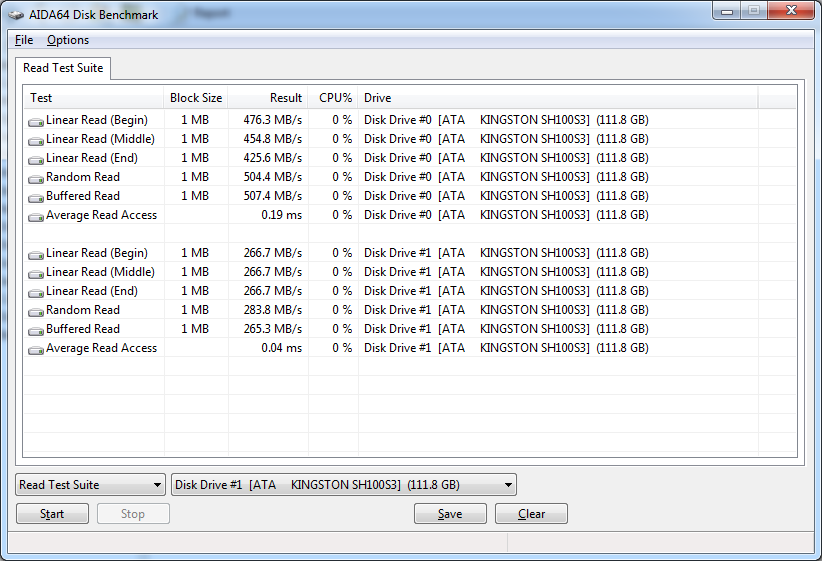 |
| AIDA64 USB 3.0 Performance Stock | AIDA64 USB 3.0 Performance Overclocked |
 |
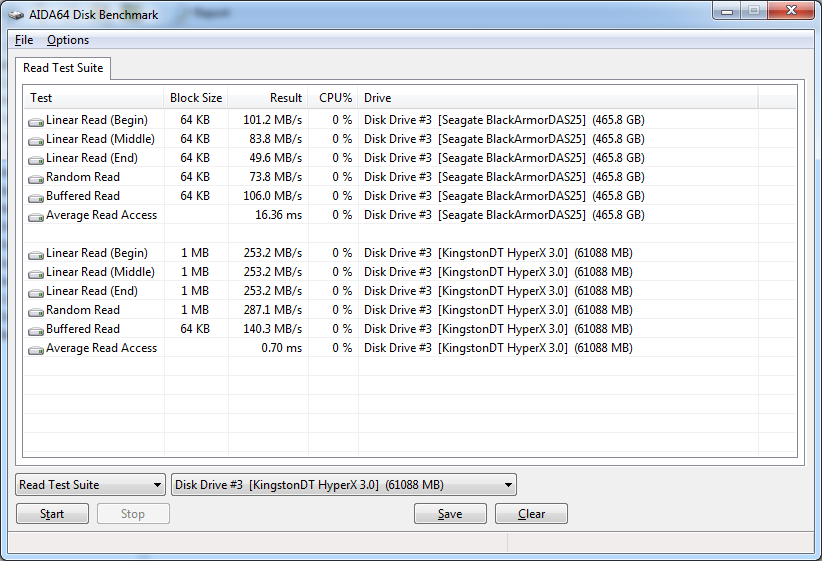 |
Power -
Power efficiency is another of those misnomers that we get caught up in. We hear about idle states and power gates. But what does that mean to you and I? On the surface having power management that reduces idle power sounds great and can be a benefit to someone that leaves their system on for long periods of time (and inactive) but how a system handles power under load and the delta between the two states is often more important than the idle power usage numbers. We use only P3 Kill A Watt instruments for measuring power. 
The UD3 had good power performance both at idle and under load when running at stock speeds. Once we overclocked the CPU things were a bit different. At idle it was the most power efficient, but as soon as we needed the board to run it started to suck the watts from the wall. 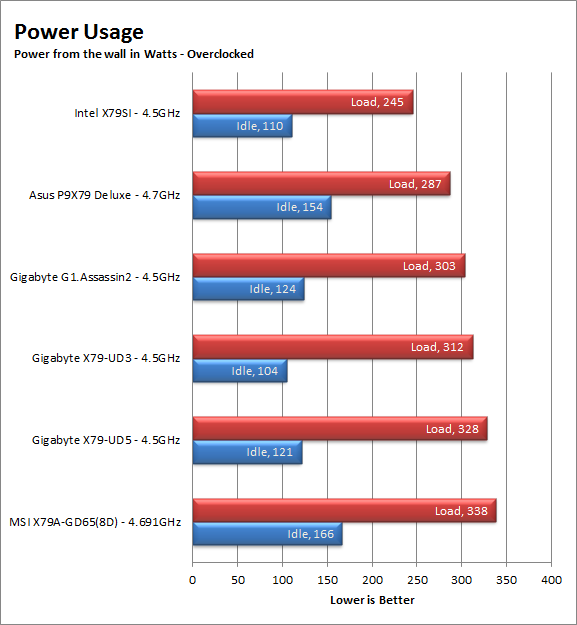
Cooling (Board Level) -
Board level cooling is an important factor in product performance and longevity. Components like the chipset, VRM modules and even capacitors need to be kept relatively cool to prevent failure. As these parts are made of silicon, they have a thermal breakdown threshold; or melting point. At that temperature the actual transistors built into chip will begin to deform and break down. Granted, the threshold is often very high, but you still need to make sure that components stay away from this level of heat for longer product life. 
The X79-UD3 did not run as hot as we feared it might. It actually fell right into line with the other boards in the test group and even managed a very good showing while overclocked. This is good news for product longevity as the cooler you can keep everything the longer it will last.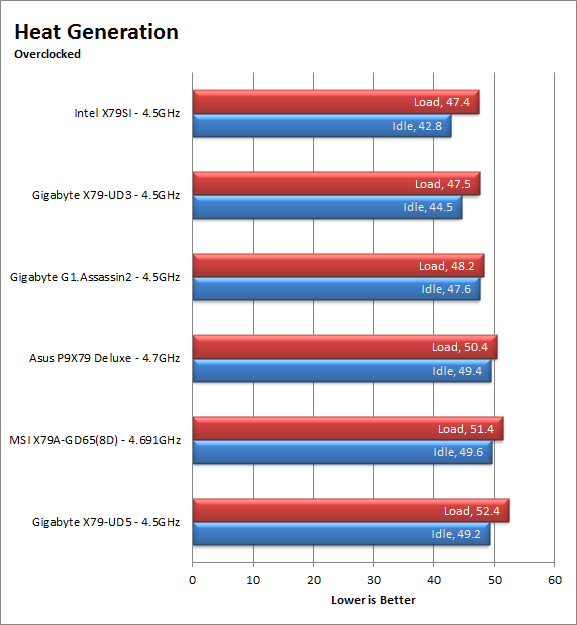
Audio -
Audio is highly subjective. What we find pleasing may sound “off” to you. That is always going to the problem with testing audio; results will vary too widely depending on the tastes of the listener. However, there are ways of measuring the audio output with an objective ear. There is also the issue of audio causing performance issues in gaming and video playback. The reason this is a potential source of concern is that all onboard audio CODECs (Compression/Decompression) are CPU controlled. This means that while the audio chip controls the audio levels and effects of the audio the actual work is done on the CPU. Usually this will not be a problem with today’s powerful CPUs. Even the lower and consumer level products can handle high-end audio these days. But again there is the chance that a bad design or software will hinder your system and performance. On the other side the limits of board space, cost, etc will also prevent the level of audio quality you can get from an add-in board. We test all audio parts with three media types, Movie (DVD), MP3 Music, and Gaming. These are pushed to our Tec On model 55 Tube Amp to see if we can detect any signal issues in the reproduction.
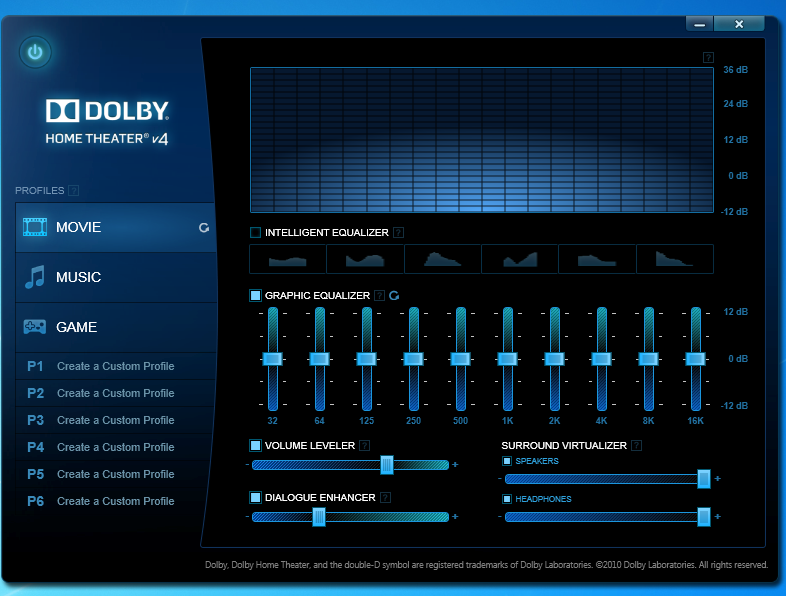 |
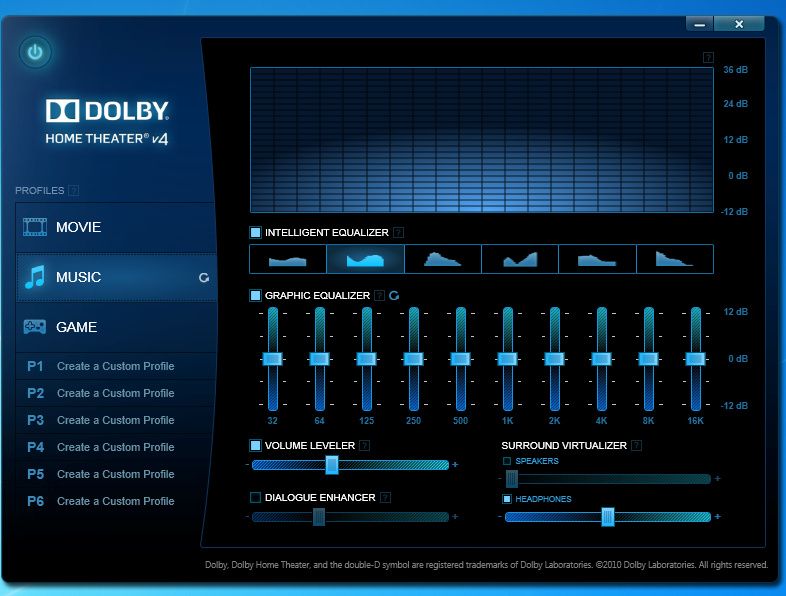 |
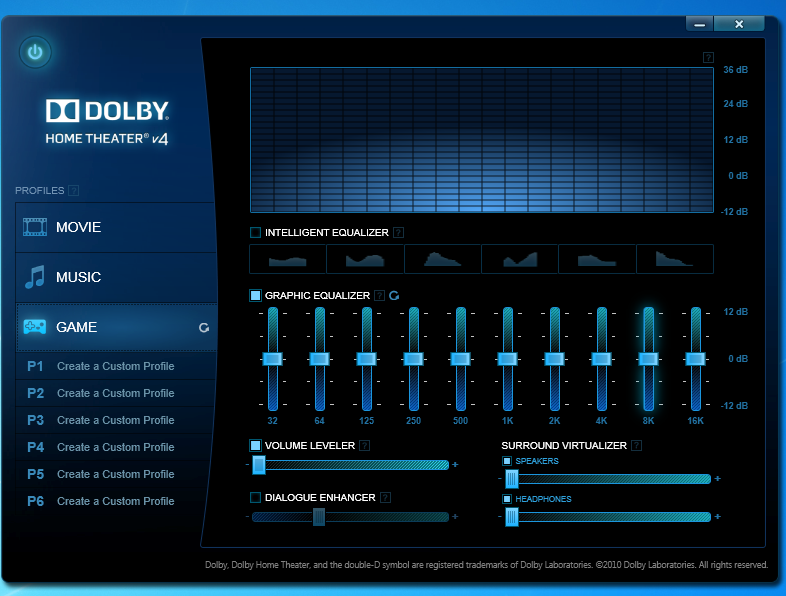 |
As we mentioned above Gigabyte included Dolby’s Home Theater audio enhancement software to help boost the audio performance of the Realtek ALC898. This utility allows you to customize your audio experience based on three different profiles; Movie, Music and Game. You can create and save different profiles for each of these and save them.
For our testing we ran the board with Dolby uninstalled and installed. With the software out of the picture the audio was good, but not outstanding. Once we installed and played around with the Dolby profiles we were able to get some very good sound out of the UD3 especially during our gaming tests.
Networking -
This one is something that is a requirement anymore. If you have a computer, the chances are good (like 99%) that you are also connected to high-speed internet. With this you need a good and solid LAN chip to make sure that your data flows properly out and back.
As is the trend these days, the network card that comes on the X79-UD3 is an Intel LAN controller. This means that you will get some solid network performance including online gaming (well for the most part as long as you have a decent internet connection). It looks like most of the major companies are following in Asus’ footsteps here which is not a bad thing really.
